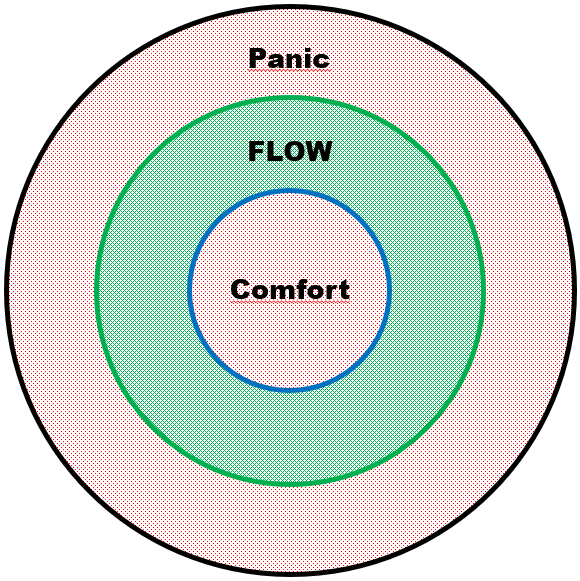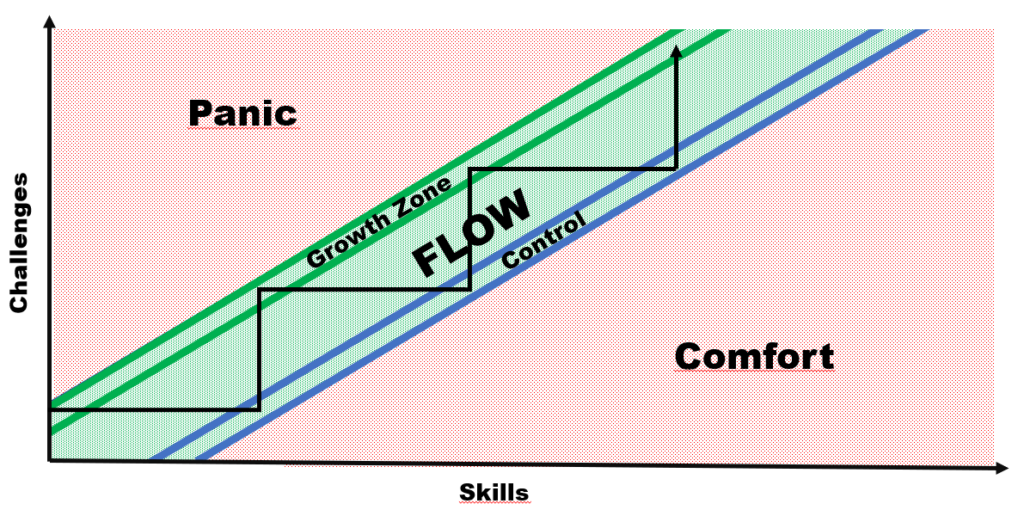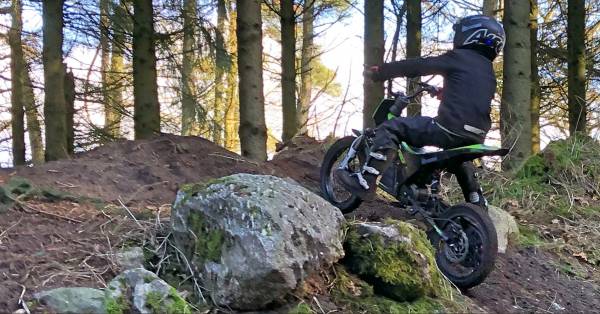My good mate and old Trial coach used to have a saying.
You haven’t trained hard enough, until you’ve either ruined something on your bike, you have bled or cried.
Of course, that’s complete nonsense – or is it?
When are we in fact training, and when are we just riding around and having fun? – we have looked at this subject, and here you get our experience.
What is Zone Training
Many riders, in my opinion, make a big mistake when training Trial.
They are practicing only the stuff that they know how to ride.
It feels nice and it does not present a major challenge for themselves.
Of course, it is perfectly ok not to have big ambitions on Trials, besides the fact that it should be fun.
The challenge, however, is that the riders who train in this way, often on see at very slow progression on their skills. (If they get any better at all). There is an imminent risk of it becoming tedious at some point. Thus, there is a risk that they will lose interest and stop participating in Trial after a while.
Of course, there is a difference between how extreme you can train a child, and an adult – or an older child.
One thing is certain – being a child or an adult – want to see progress and experience victories.
This means we want to raise our skill level and get better at the sport we love.
To ensure that we are training at the right level and to constantly guarantee that the skill level is improving, we use a method that is called Zone Training.
There is basically nothing revolutionary in this method. It is used under many names and even more variants.
Basically, training is divided into 3 zones or areas. The comfort zone, the flow zone (also called the training zone) and the panic zone.

Comfort Zone.
It nice to be in this zone. We ride in sections or stuff that we already know how to tackle.
That can be the turns where we are in 100% control, the edge that we can safely ride without panicking, and we keep the pulse where we like it.
We do not move your limits for what we can do, but we enjoy ourselves.
Flow zone
In this zone it is somewhat more challenging for the rider. We push ourselves and the pulse is high. We move boundaries and change our attitudes about what is difficult and what we can do.
We are constantly going further, higher and faster
Panic Zone.
It not nice to be in the panic zone. We have taken it a step too far, and we are no longer learning anything. The rider is stressed or even panicking. The rider is in plain survival mode – and if they are lucky, they will get out of this alive (maybe).
The idea of Zone training is to get the training centered in the Flow zone.
We do this by getting the pulse up a little higher, running a harder line in the Trial section, and setting higher demands on ourselves overall.
The trick is to get as close to the panic zone as possible, without getting over the border of the panic zone itself.
When it comes to training children, it is a good idea to play safe and keep well away from the Panic Zone. It can deter the child completely from the sport if they get lost in the panic zone!
Flow zone in detail.
As described above, we want a workout to be placed in the Flow zone to provide the best effect.
However, it is quite normal to see a pattern when the rider is training according to the Flow concept.
Often the rider will notice that they start very close to the Panic zone at the start of training.
We call this zone the Growth zone. The Growth zone is where the rider will see the biggest improvement in skillset.
As the rider gets better during training session, the rider’s level gets closer to the Comfort zone.

The good coach makes sure to “tighten” the level when the rider is in complete control (before we get into total comfort). Thus, the rider returns to the Growth zone again, and gradually returns to the Control Zone. In this way, it is important to keep the rider in the Flow zone by constantly “tightening” the level.
As mentioned earlier, in the case of children, it is a good idea to keep a safe distance from the panic zone. This also means that we stay in the lower part of the Growth zone, and perhaps often closer to the control zone. Better safe than sorry!
Also, keep in mind that children endure as long workouts sessions, as adults or older children.
How long is individual, but the rule is shorter training sessions to ensure that the child is focused and having fun.
It all sets demands on the coach.
This model sets demands on the rider, but it puts even higher demands on the coach.
It is the coach’s job to organize the training so that the right level (zone) is hit at the right time in the workout.
When adults or large children are riding, you can go to zone training right after warming up. It is my experience that it is a little different with smaller children (usually under 10 years).
A normal Training session for smaller children will start with riding in the comfort zone, and then slowly move higher and higher up into the flow zone in terms of difficulty of the ride and physics to be used by the rider.
It may be a good idea to have secured the riders acceptance of the level that we are going to be training – this can be done by done by setting focus points before the training starts. It is also advantageous to know the riders training capacity so that the duration and intensity of the training can be organized.
It can be an advantage to end the training in the comfort zone – this way the heart rate drops to a mare pleasing level, and the rider can feel that the level has improved.
It gives a good feeling that makes the rider looking forward to the next workout
So – it may not be a matter of something being damaged on the bike, the driver bleeding or crying – but whether there are boundaries being moved and the rider being challenged.
When the riders can see that they are getting better, they will come back for more.
Feet up – and have an effectful training!




 Training alone, or with others?
Training alone, or with others?
